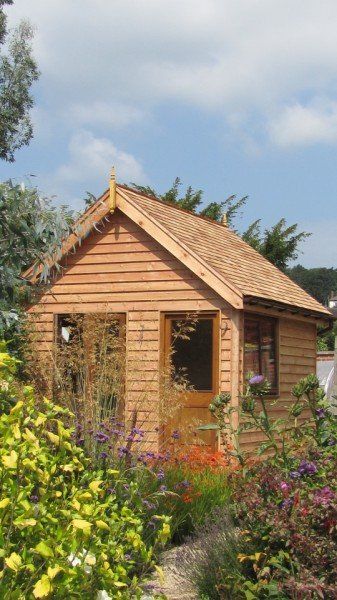
Tax questions frequently asked by business and residential clients wishing to build a garden office, studio or garden room for work or pleasure often include the following subjects:
- Garden office capital allowances / depreciation,
- Garden office capital gains tax / corporation tax
- Garden office VAT
In this post accountant Giuseppe Colombi considers questions about the relationship between a garden office, capital allowances and depreciation.
Capital allowances, depreciation and your garden office
What is depreciation?
Depreciation basically is a cost which reflects the fall in value of an asset over a number of years.
As generally speaking buildings do not depreciate in value, depreciating a building is not recommended, although a small depreciation of 2% is acceptable.
This has no value in taxation terms because HMRC does not allow depreciation as a cost to calculate the taxable profits. However, HMRC does allow a business to claim capital allowances.
What are capital allowances?
Capital allowances are deductions that you can claim for the wear and tear of the fixed assets that you have bought and used in your trade or business.
For example you can claim capital allowances on the cost of plant and machinery, computers or similar fixed assets.
Unfortunately, HMRC does not allow capital allowances on commercial buildings and therefore nothing can be claimed to cover the cost of a garden office or other garden building used for commercial purposes.
However, you may be able to claim plant and machinery allowances for expenditure on certain fixtures which you buy for the purposes of your business.
This expenditure either qualifies for writing down allowances at the rate for the main pool, currently 20 per cent or, if the fixtures are long-life assets, at the rate for the special rate pool, which is 10 per cent but reduced to 8% from 1/4/2012.
Qualifying fixtures (the last 4 items are normally classified long-term assets) can include:
- some kitchen equipment
- bathroom suites, and some fittings
- fire alarm systems
- CCTV
- burglar alarm systems
- electrical systems, including lighting systems
- cold water systems
- space or water heating systems, powered systems of ventilation, air cooling or air purification, and any floor or ceiling comprised in such systems
- external solar shading
Annual Investment Allowance
In practice the cost of the above fixtures is likely to be covered by the Annual Investment Allowance (AIA), which is at least £25,000 depending on the year the plant & machinery is purchased.
So the AIA is available on virtually all plant or machinery expenditure.
It may be claimed on long-life assets, integral features and other special rate expenditure, as well as on general plant and machinery, and the taxpayer is free to allocate his AIA against any type of Plant & Machinery expenditure in any way he chooses and thus reduce his tax bill accordingly.
Sole trader or Limited company.
Where a claim can be made for capital allowances, a Sole-trader has a greater benefit compared to a Limited Company. This is because the claim for capital allowances on qualifying plant and machinery will reduce the amount of Class 4 National Insurance.
Giuseppe Colombi
Giuseppe Colombi is an accountant with over twenty five years experience and owner of Best Choice Accountancy Ltd. He has a friendly, practical style and removes the stress of accounts, tax and deadlines, helping you focus on building your business. He enjoys sharing his knowledge of business, accounting and tax with business owners like you, small companies, contractors and freelancers.

